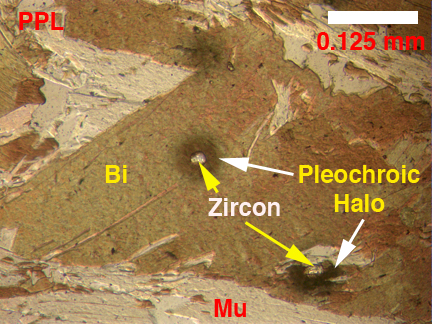| Mineral Name |
Muscovite | Biotite |
| Crystal System |
Monoclinic | Monoclinic |
| Chemical Comp.. |
K2Al4Si6Al2O20(OH,F)4 | Complex! |
| Color |
Colorless |
Brown or Green |
| Pleochroism |
Weak
to None |
Strong - Brown or Green |
| Cleavage |
One
perfect basal |
One perfect basal |
| Relief |
Moderate | Moderate |
| Birefringence |
High 2nd order |
High 2nd order |
| 2V | 30˚-47˚ |
0˚-25˚ |
| Optic Sign | Negative | Negative |
| Twinning |
None |
None |
Muscovite
and Biotite micas are easily indentified in thin section because they
almost always exhibit "speckled extinction" in cross polarized light
(see the top two and bottom two photomicrographs below). Usually, the
perfect basal cleavage of the micas is evident in thin section.
Biotite is ditinguished from Muscovite because it exhibits pleochroism,
which is demonstrated in the PPL photos below. The sequence of
photomicrographs shows the rotation of the stage from 0˚, through 45˚,
ending at 90˚. The high 2nd order birefringence colors of both
Muscovite and Biotite can be seen in the photomicrographs taken at 45˚
- Biotite usually appears duller than Muscovite under cross polarized
light because birefringence is masked to some degree by the mineral
color.
0˚ Rotation.
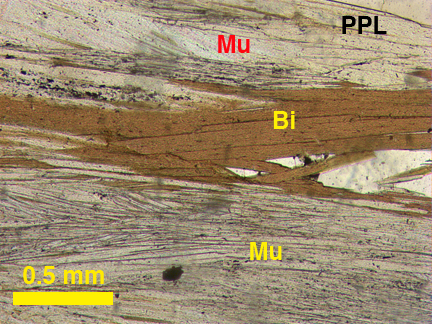
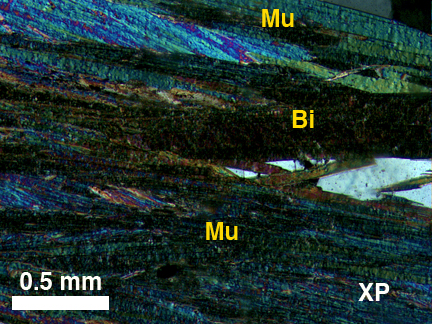
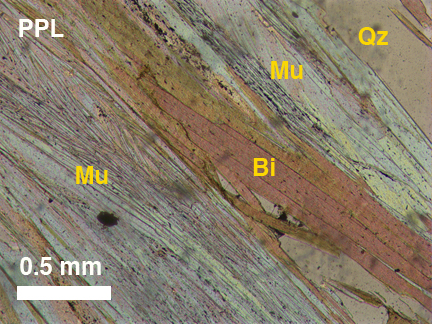
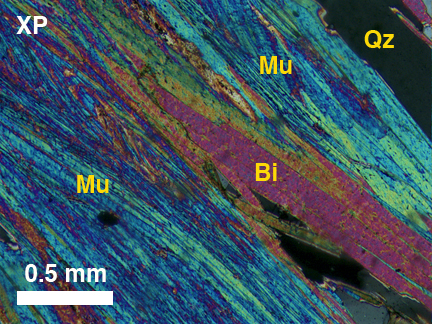
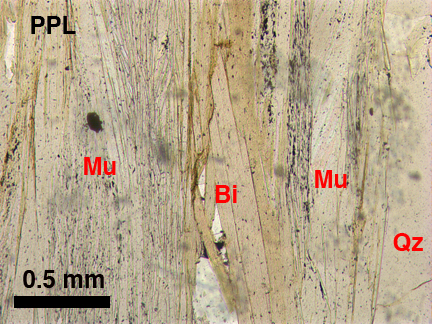
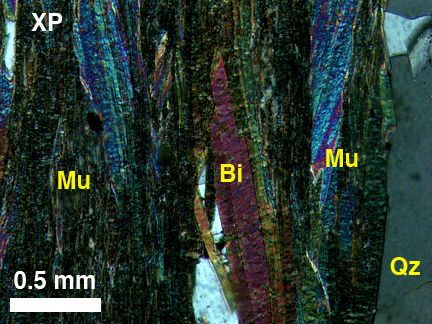
0˚ Rotation.


45˚ Rotation.


90˚ Rotation.


Pleochroic
haloes are developed in biotite surrounding
small zircon inclusions. The halo is produced by radiation damage
from the decay of uranium contained in the zircon.

